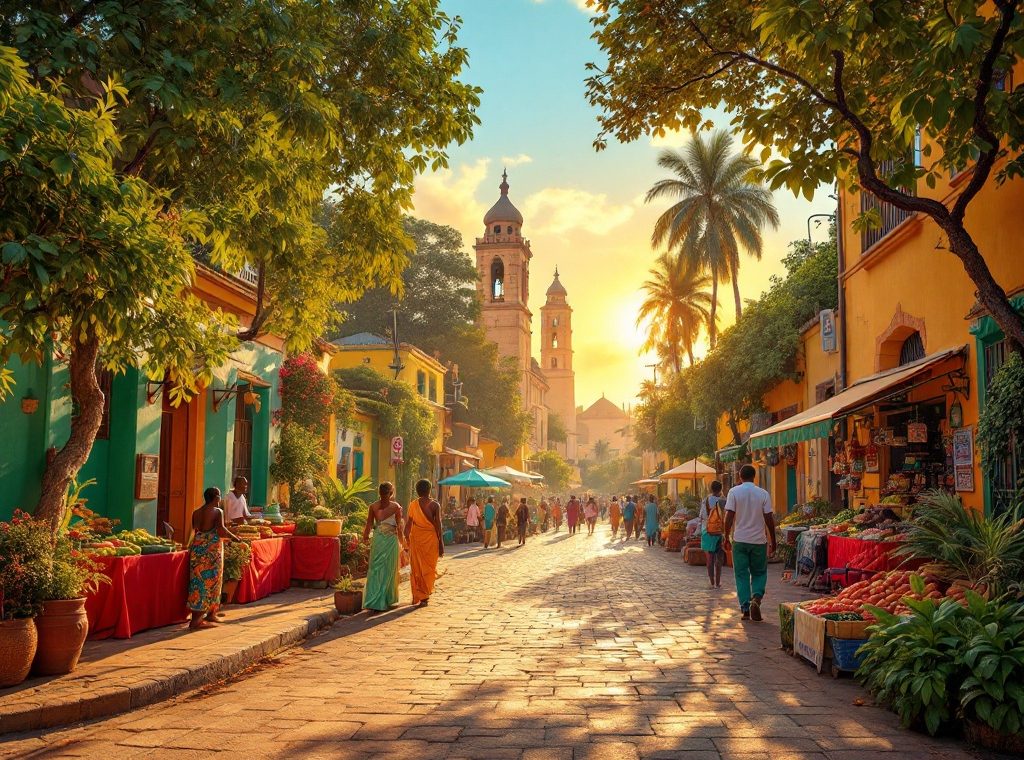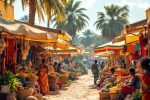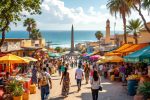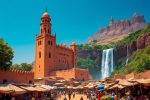How to Choose the Best Time to Travel to Senegal
Dreaming of Senegal? Discover the ideal time to explore this vibrant West African gem. From November to May, Senegal’s dry season offers sunshine and comfortable temperatures, perfect for exploring Dakar, Saint-Louis, and stunning national parks. Witness incredible wildlife, vibrant festivals, and rich culture. Learn about the best months to visit, average temperatures, and essential travel tips for an unforgettable Senegalese adventure. Start planning your dream trip today!
Important information
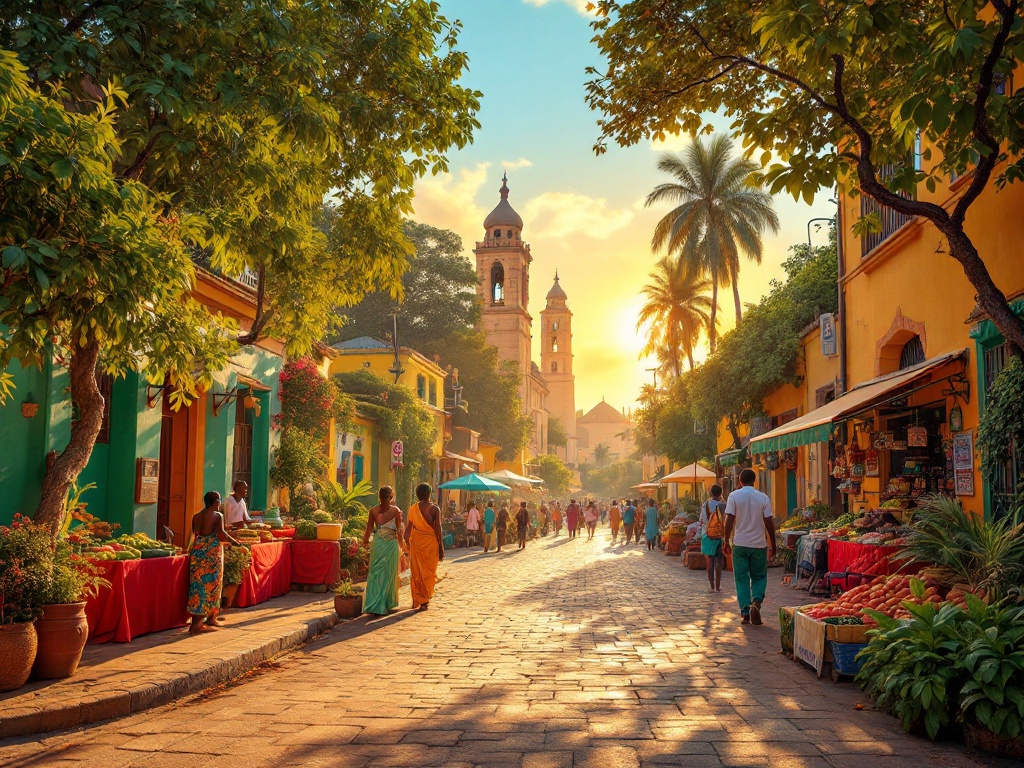
- Senegal’s dry season (November to May) offers the best weather for exploring, with cooler temperatures and lower humidity. The best time within this is between November and March.
- The rainy season (June to October) offers lush scenery and lower prices but travel can be difficult due to rain and road closures.
- Dakar’s average temperatures range from 22°C to 30°C year-round. The warmest months are March and April, while December and January are the coolest.
- April has the Dakar Music Festival and Senegalese Independence Day celebrations, increasing demand for lodging and transport.
- Pack light clothing, sunscreen, and insect repellent. Learning some Wolof phrases is helpful. Book travel and accommodations in advance, especially during peak season.
Understanding the Best Time to Travel to Senegal
Senegal’s dry season lasts from November to May and offers cooler temperatures and lower humidity. This period is ideal for exploration, especially between November and March when the weather is particularly pleasant.
Key Factors in Choosing Travel Time
Senegal offers unique travel experiences depending on the time of year.
Dry Season (November to May)
Experience sunny, comfortable weather, ideal for:
- exploring historical sites,
- embarking on outdoor adventures.
Rainy Season (June to October)
Witness a lush, green paradise, perfect for:
- attracting nature lovers.
Choose the season that aligns with your travel goals.
Travel Seasons in Senegal
Senegal offers two distinct seasons for travelers:
Dry Season (November to May)
Enjoy sunshine and comfortable temperatures, ideal for exploring cities like Dakar and Saint-Louis. This season is also perfect for venturing into Senegal’s national parks.
Rainy Season (June to October)
Experience a vibrant green landscape with lower travel costs. Be mindful of potential road closures, requiring careful planning for your trip.
Exploring Senegal’s Climate and Weather Conditions
Senegal has a tropical climate with two distinct seasons: dry and wet. The dry season, from November to May, offers warm, sunny days and comfortable humidity. This makes it an ideal time to visit. The rainy season, from June to October, brings increased humidity and substantial rainfall.
Dry Season (November to May)
During the dry months, visitors can enjoy warm, sunny days perfect for exploring Senegal’s attractions. These include vibrant cities, stunning national parks, and pristine beaches. Popular activities include game fishing and various water sports.
Rainy Season (June to October)
The rainy season offers a refreshing break from the heat. However, frequent downpours, particularly in the south, can sometimes hinder outdoor adventures.
Temperatures vary across the country. Northern Senegal experiences average dry season temperatures around 26°C, while the south can reach the low 30s. From December to February, the harmattan, a dry, dusty wind, sweeps across the country. This leads to cooler mornings and evenings. Rainy season temperatures climb into the mid-30s with accompanying high humidity.
Dakar, Senegal’s capital city, enjoys average temperatures between 22°C and 30°C throughout the year. March and April are the warmest months, while December and January offer the coolest respite.
Dry Season: November to May
Senegal’s dry season, spanning from November to May, offers pleasant warmth in Dakar, with average temperatures around 25 degrees Celsius. These comfortable conditions are perfect for enjoying outdoor activities and soaking up the sunshine.
Rainy Season: June to October
Senegal’s rainy season lasts from June to October, with the heaviest rainfall typically in July and August. While the landscape flourishes in vibrant green during this time, travel can be challenging due to possible flooding and restricted access to some areas. Therefore, plan your trip accordingly.
Average Temperatures in Dakar
Dakar’s dry season, spanning from November to May, offers pleasant average temperatures of 25°C (77°F). This period coincides with the peak tourist season, from November through February, ensuring comfortable weather conditions for visitors.
Month-by-Month Guide to Visiting Senegal
January: sunshine and comfortable 77°F (25°C) temperatures, perfect for birdwatching at Djoudj National Bird Sanctuary.
February: pleasant weather continues, ideal for exploring Dakar or Saint-Louis.
March: warms slightly to 82°F (28°C), making the Sine-Saloum Delta an attractive destination.
April: the hottest month at 86°F (30°C), requires staying hydrated and seeking shade.
May: offers a welcome temperature decrease, a great time to visit Casamance before the rains arrive.
June: the rainy season begins with short, heavy showers and consistent 86°F (30°C) temperatures.
July: increased rainfall, potentially impacting travel, making city markets and cultural sites appealing alternatives.
August: heavy rain and humidity at 82°F (28°C).
September: less rain, though humidity lingers, showcasing lush landscapes.
October: the rains subside, making it a less crowded time to visit with temperatures around 82°F (28°C).
November: the dry season returns with cooler 79°F (26°C) temperatures, drawing visitors back to the beaches.
December: sunny skies and 77°F (25°C) temperatures, a popular time for festivals and travel.
Senegal in January
Senegal in January offers pleasant, dry season weather, ideal for exploring cities and national parks. Cooler temperatures make discovering Dakar and Saint Louis a comfortable experience. Imagine vibrant markets and historical landmarks waiting to be explored. Venture beyond the cities to experience unique safaris in Senegal’s wildlife-rich national parks. Or, relax on the golden sands of stunning beaches like Cap Skirring.
Senegal in February
February is an ideal time to visit Senegal, offering warm and comfortable weather perfect for exploring the country’s rich culture and vibrant local festivals. Being part of the dry season, February also presents pleasant conditions for outdoor adventures.
Senegal in March
Senegal shines in March. Warm, sunny days invite exploration, offering a chance to discover diverse landscapes and experience the country’s rich culture. It’s an ideal time for outdoor adventures, immersing yourself in Senegal’s beauty.
Senegal in April
Senegal in April offers warm temperatures ideal for exploring, with highs around 30°C and lows near 15°C. This pleasant weather is perfect for browsing local markets filled with colorful crafts and cultural treasures. However, April marks the start of the rainy season, so be ready for occasional showers and increased humidity. This month also often features two major events: the Dakar Music Festival and Senegalese Independence Day celebrations. These cultural experiences can increase demand for accommodations and transportation, so booking in advance is recommended. Here’s a summary of what to expect: warm weather, some rain, and vibrant cultural events.
Weather
Warm temperatures averaging 30°C, lows around 15°C, occasional showers, and increased humidity.
Events
Dakar Music Festival, Senegalese Independence Day celebrations.
Pros
- Pleasant weather for outdoor activities.
- Vibrant cultural events.
Cons
- Start of the rainy season.
- Increased demand for accommodations and transportation.
Senegal in May
Senegal undergoes a transformation in May as the dry season transitions to the wet season. Warm temperatures merge with increasing humidity, and the arrival of the first rains revitalizes the landscape. This shift brings a vibrant rebirth of vegetation, creating a truly stunning spectacle.
Senegal in June
Senegal experiences two distinct seasons: a rainy season and a dry season. The rainy season, spanning from June to October, is characterized by warm temperatures and frequent showers, resulting in high humidity. In contrast, the dry season, from November to May, offers cooler temperatures and significantly lower humidity.
Senegal in July
Senegal transforms into a lush green paradise during July’s rainy season. Frequent rainfall and high humidity characterize this period, resulting in warm days and cooler nights. Temperatures typically range from 15 to 30 degrees Celsius.
Senegal in August
Senegal in August offers a unique perspective on the country’s natural beauty due to the vibrant greenery from the peak of the rainy season. However, heavy rains can make some roads impassable, and the humidity is intense. Plan accordingly for an unforgettable trip.
Senegal in September
Experience Senegal’s unique charm in September as the country transforms into a vibrant green landscape, rejuvenated by the rainy season. While humidity is higher and short bursts of rain are common, this rainfall reveals a unique beauty. The landscape flourishes, and the air is refreshingly clean. Be aware that some national parks might be inaccessible due to road conditions. Plan your adventure accordingly for an unforgettable experience.
Senegal in October
As Senegal’s rainy season ends in October, dry weather sets in, but the landscape retains its lush greenery, promising a unique and memorable visit.
Senegal in November
November marks the start of Senegal’s dry season, bringing milder weather and making it a popular time for tourists.
Senegal in December
Senegal’s dry season includes December, offering pleasant weather ideal for cultural exploration. However, the harmattan, a dry, dusty wind, can sometimes affect conditions.
Travel Tips for Visiting Senegal
Plan your Senegalese adventure during the dry season, from November to May, for ideal weather conditions. Pack light clothing, sunscreen, and insect repellent. Before you go, learn about local customs. Booking accommodations and travel in advance is recommended, especially during peak season, which aligns with events like the Dakar Music Festival and Senegalese Independence Day in April. Tabaski, a major festival, is also a popular time to visit, but its date varies based on the Islamic calendar. Learning basic Wolof phrases will enhance your experience. Senegal’s diverse population includes both Christian and Muslim communities, so respecting both is crucial. Be aware of the regional cultural differences between the north and south.
Peak Season Travel Tips
Plan your trip ahead of time by booking accommodations and tours in advance to secure your spot. When visiting popular attractions, consider arriving early or late to avoid large crowds. Stay hydrated throughout the day, especially in warm climates, and remember to use sun protection.

